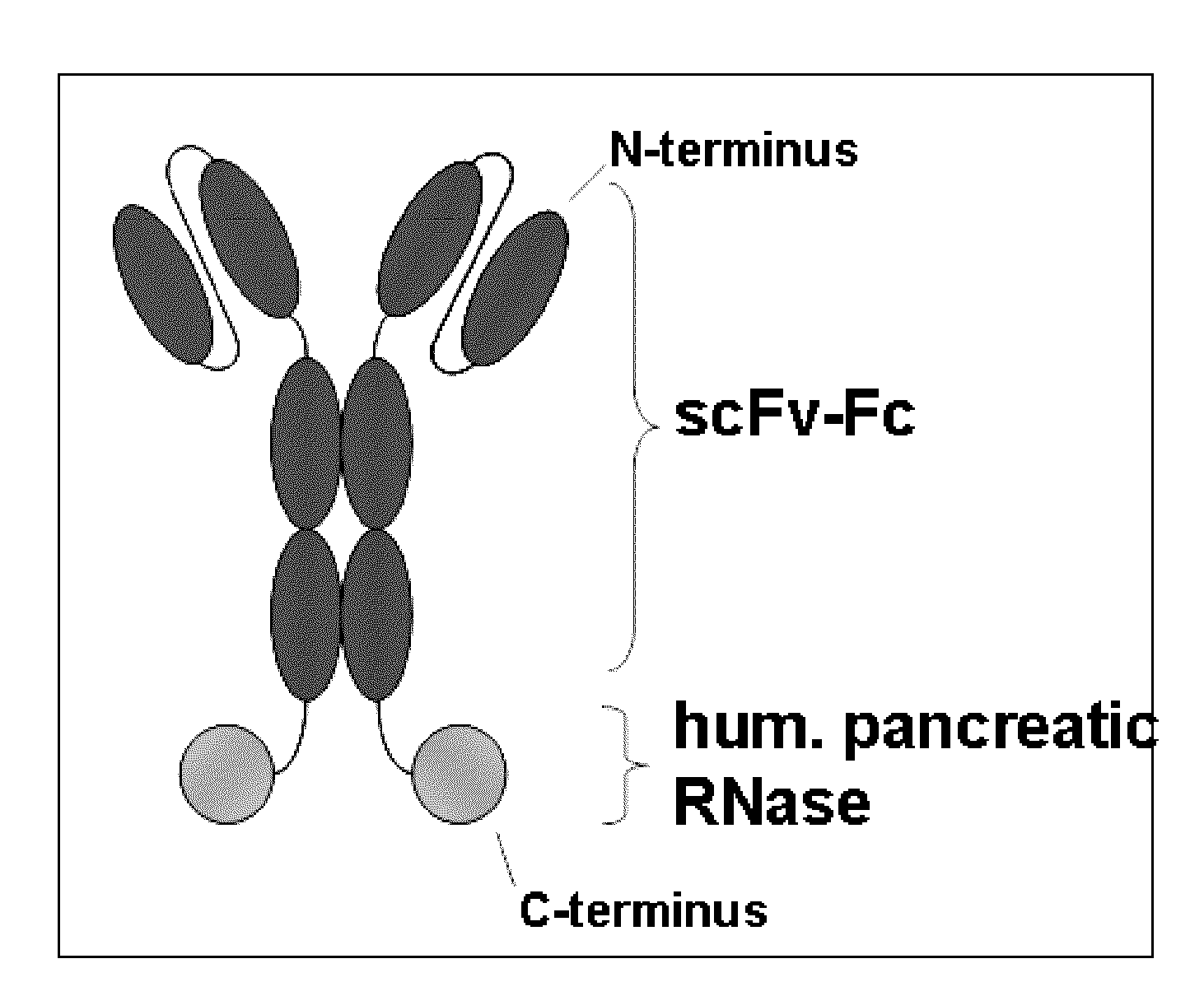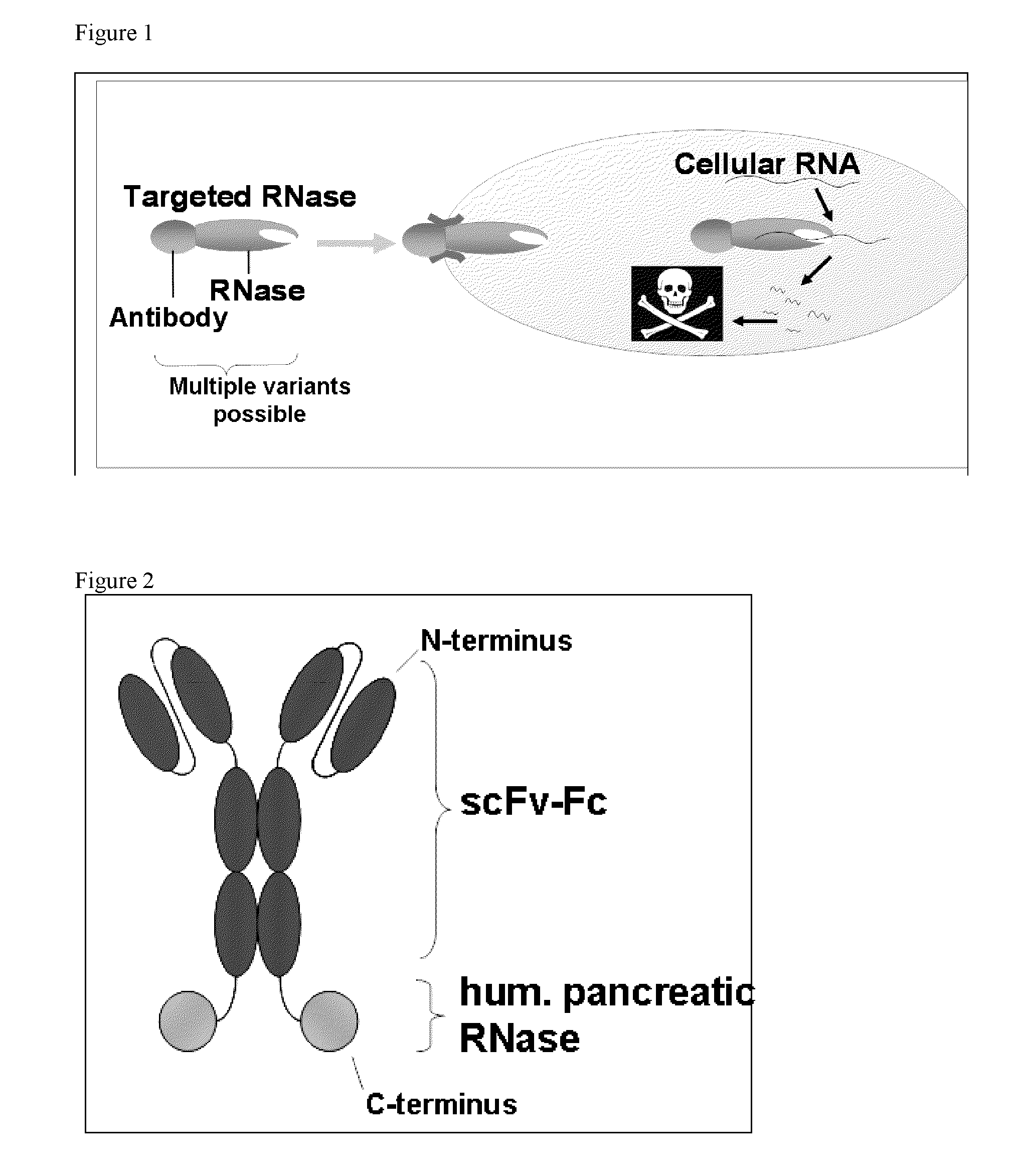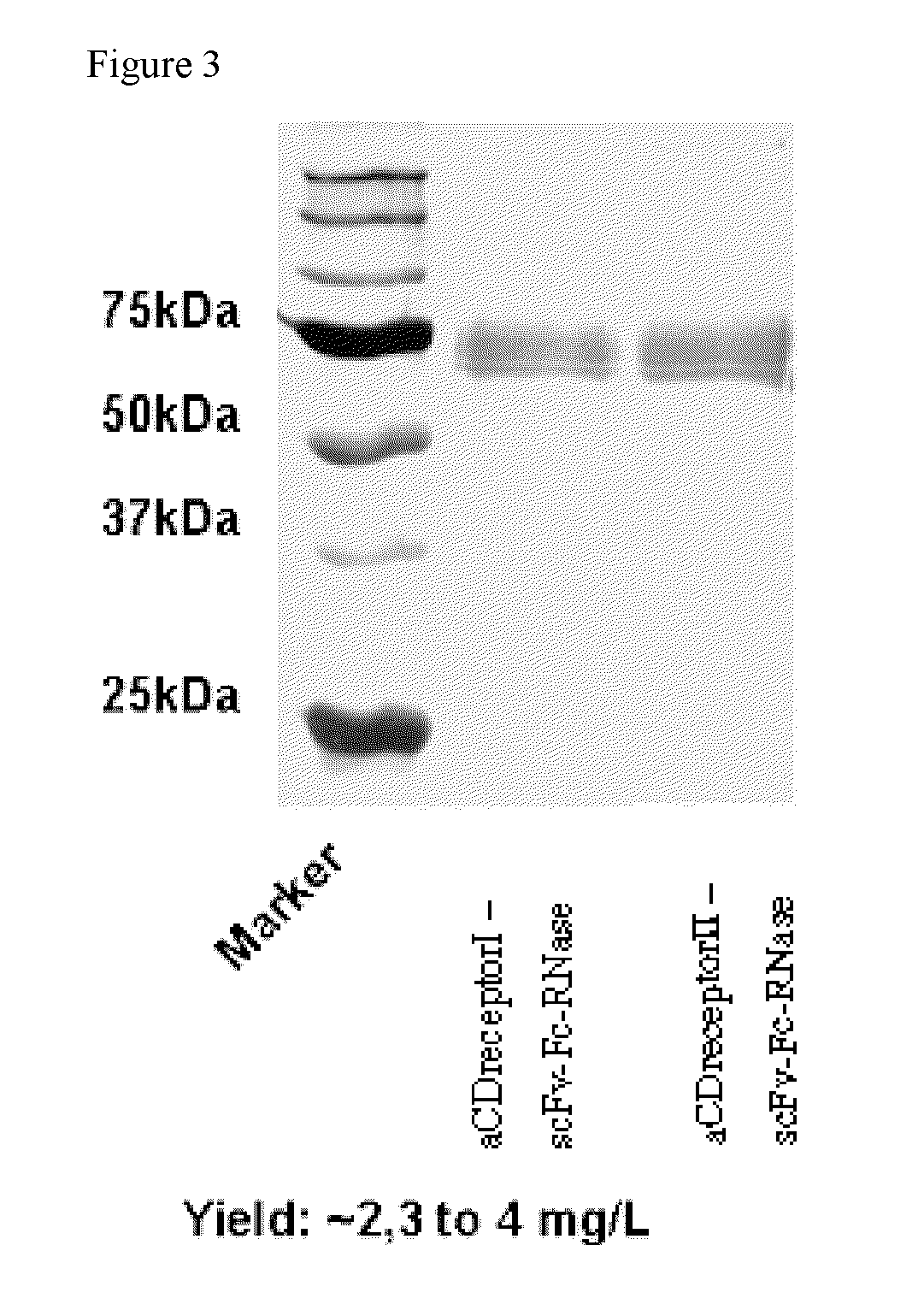Antibody-rnase-conjugate
a technology of ab-rnase and conjugate, which is applied in the field of antibodyrnase conjugate, can solve the problems of unfavorable pharmacokinetics, ab-rnase conjugate, and difficult manufacturing
- Summary
- Abstract
- Description
- Claims
- Application Information
AI Technical Summary
Benefits of technology
Problems solved by technology
Method used
Image
Examples
example 1
Expression and Isolation of Anti-CD Receptor scFvFc-RNase Conjugate
[0045]The coding sequence comprised in Seq ID No. 1 was used in nucleic acid constructs, both comprising operably linked in 5′ the coding sequence (I and II, respectively) for an Fv portion specific for the CD receptor in the expression vector pCMV myc-ER (obtainable from Invitrogen), which provided operon functions and functional elements for transcription and translation. Expression was transient in HEK293 T-cells.
[0046]After transfection of HEK293 T-cells, the anti-CD receptor scFvFc-RNase conjugate was isolated from culture supernatants by absorption to a protein A Sepharose column, followed by elution. The yield of pure anti-CD receptor scFvFc-RNase was in the range of 2.3 to 4 mg / L cell culture supernatant. An SDS-PAGE of samples after purification is shown in FIG. 3, wherein the conjugate construct and the anti-CD receptor scFv portion variant thereof show about the same molecular weight of approximately 75 kD...
example 2
Cell-Free RNase Activity of Anti-CD Receptor scFvFc-RNase
[0049]In order to assess the RNase activity of anti-CD receptor scFvFc-RNase, Sepharose A—purified preparations were added to in vitro translation reactions of luciferase mRNA using the cell-free translation in rabbit reticulocyte lysate (Promega).
[0050]The reduction of luminescence by the presence of RNase activity serves as a direct indicator for the presence of RNase, either from bovine RNase used as a positive control (2.5 μM) or by anti-CD receptor scFvFc-RNase according to the invention (2.5 μM) or using the Ab fragment anti-CD receptor scFvFc (2.5 μM), i.e. without RNase portion as a negative control.
[0051]The control for 100% luminescence was without addition of any antibody or RNase preparations. The results, shown in FIG. 5, demonstrate that it is only anti-CD receptor scFvFc-RNase according to the invention as well as bovine RNase that provide for an efficient reduction of the luminescence, i.e. degradation of lucif...
example 3
The Binding of Anti-CD Receptor scFvFc-RNase to CD Receptor+ Lymphoma
[0053]As an example for the antigen-specific binding of conjugates according to the invention, the binding of anti-CD receptor scFvFc-RNase conjugates to lymphoma cells expressing the surface marker CD receptor was assayed by surface plasmon resonance (SPR). Surface plasmon resonance was assayed for both anti-CD receptor variants of anti-CD receptor scFvFc-RNase, using varying concentrations of conjugates on a CM5 chip equipped with immobilized recombinant CD receptor-Fc. As a control, lysozyme was immobilized in a parallel flow cell.
[0054]Results are depicted in FIG. 6 in relative units (RU). The affinities for the conjugate was determined to approximately 1 nM, which is contrasted by an affinity of approximately 600 nM, determined for a control construct forming a monovalent FcFv-RNase fusion protein.
PUM
| Property | Measurement | Unit |
|---|---|---|
| molecular weight | aaaaa | aaaaa |
| molecular weight | aaaaa | aaaaa |
| structure | aaaaa | aaaaa |
Abstract
Description
Claims
Application Information
 Login to View More
Login to View More - R&D
- Intellectual Property
- Life Sciences
- Materials
- Tech Scout
- Unparalleled Data Quality
- Higher Quality Content
- 60% Fewer Hallucinations
Browse by: Latest US Patents, China's latest patents, Technical Efficacy Thesaurus, Application Domain, Technology Topic, Popular Technical Reports.
© 2025 PatSnap. All rights reserved.Legal|Privacy policy|Modern Slavery Act Transparency Statement|Sitemap|About US| Contact US: help@patsnap.com



